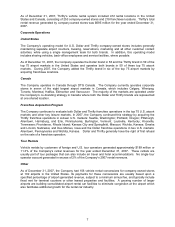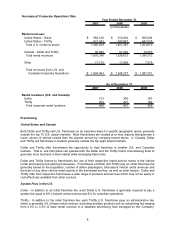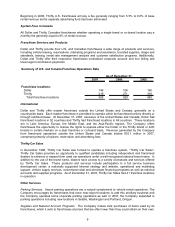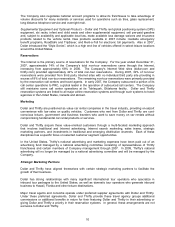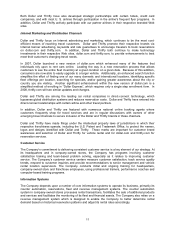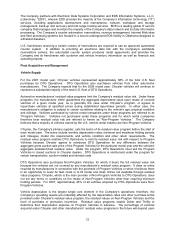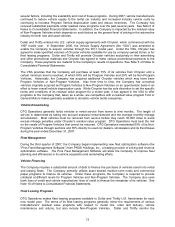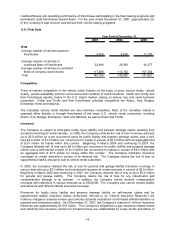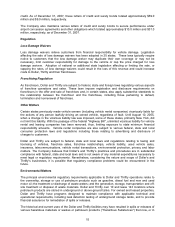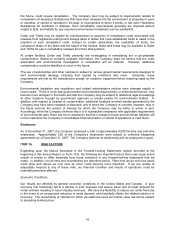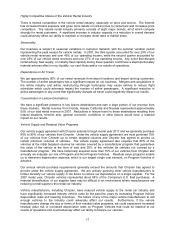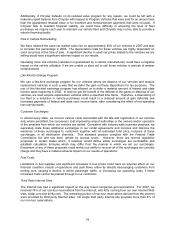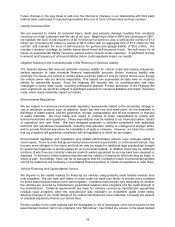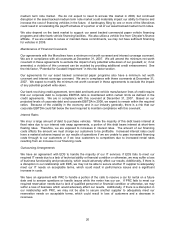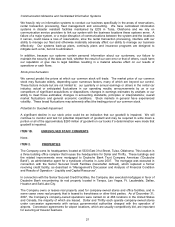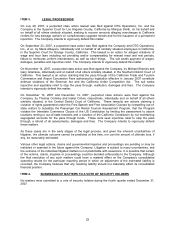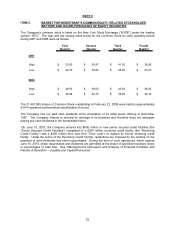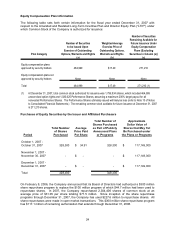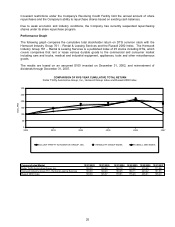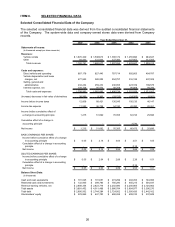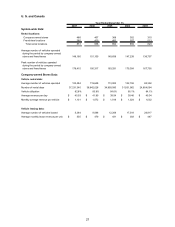Thrifty Car Rental 2007 Annual Report Download - page 25
Download and view the complete annual report
Please find page 25 of the 2007 Thrifty Car Rental annual report below. You can navigate through the pages in the report by either clicking on the pages listed below, or by using the keyword search tool below to find specific information within the annual report.Highly Competitive Nature of the Vehicle Rental Industry
There is intense competition in the vehicle rental industry, especially on price and service. The Internet
has increased brand exposure and gives more details on rental prices to consumers and increases price
competition. The vehicle rental industry primarily consists of eight major brands, all of which compete
strongly for rental customers. A significant increase in industry capacity or a reduction in overall demand
could adversely affect our ability to maintain or increase rental rates or market share.
Seasonality
Our business is subject to seasonal variations in customer demand, with the summer vacation period
representing the peak season for vehicle rentals. In 2007, the third quarter accounted for over 29% of our
vehicle rental revenues and over 45% of our operating income, while the second quarter accounted for
over 25% of our vehicle rental revenues and over 27% of our operating income. Any event that disrupts
rental activity, fleet supply, or industry fleet capacity during these quarters could have a disproportionately
material adverse effect on our liquidity, our cash flows and/or our results of operations.
Dependence on Air Travel
We get approximately 90% of our rental revenues from airport locations and airport arriving customers.
The number of airline passengers has a significant impact on our business. Mergers and acquisitions in
the airline industry and airline restructuring through bankruptcy may cause airlines to reduce flight
schedules which could adversely impact the number of airline passengers. A significant reduction in
airline passengers or any event that significantly disrupts air travel could negatively impact our results.
Concentration in Leisure Destinations
We have a significant presence in key leisure destinations and earn a large portion of our revenue from
these markets. Rental revenue from Florida, Hawaii, California and Nevada represented approximately
55% of our total rental revenue in 2007. Reductions in leisure travel to these destinations resulting from
natural disasters, terrorist acts, general economic conditions or other factors would have a material
impact on our results.
Vehicle Supply and Residual Value Programs
Our vehicle supply agreement with Chrysler extends through model year 2011 and we generally purchase
80% to 90% of our vehicles from Chrysler. Under the vehicle supply agreement, we must purchase 75%
of our vehicles from Chrysler up to certain targeted volumes and Chrysler has agreed to provide us
certain minimum volumes of vehicles. The vehicle supply agreement also requires that 80% of the
vehicles at the initial targeted volumes be vehicles covered by a manufacturer program that guarantees
the value of the vehicle at the time of sale and 20% of the vehicles be vehicles not covered by a
manufacturer program. We have historically acquired more than 75% of our vehicles from Chrysler and
annually we evaluate our mix of Program and Non-Program Vehicles. Residual value programs enable
us to determine depreciation expense, which is our largest single cost element, on Program Vehicles in
advance.
Our annual vehicle purchase requirements generally exceed the amounts that Chrysler has agreed to
provide under the vehicle supply agreement. We are actively pursuing other vehicle manufacturers to
further diversify our vehicle supply in the future to reduce our dependence on a single supplier. For the
2007 model year, Chrysler vehicles represented about 88% of the Company’s U.S. fleet purchases. A
material diversification of our supplier base may be difficult in an environment where manufacturers are
reducing overall supply to the rental car industry.
Vehicle manufacturers, including Chrysler, have reduced vehicle supply to the rental car industry and
have significantly increased industry vehicle costs for the past few years by increasing Program Vehicle
depreciation rates and lowering incentives. The failure of any of the major vehicle manufacturers to sell
enough vehicles to the industry could adversely affect our results. Furthermore, if the vehicle
manufacturers change the size or terms of their residual value programs, we could experience increased
residual value risk or increased depreciation rates on Program Vehicles that could be material to our
results of operations and could adversely affect our ability to finance our vehicles.
17


